Thinking Like an Investor: Engineering Insights for Success
Written on
Chapter 1: Understanding the Investor Mindset
The way you approach engineering can often be more significant than the technical specifics.
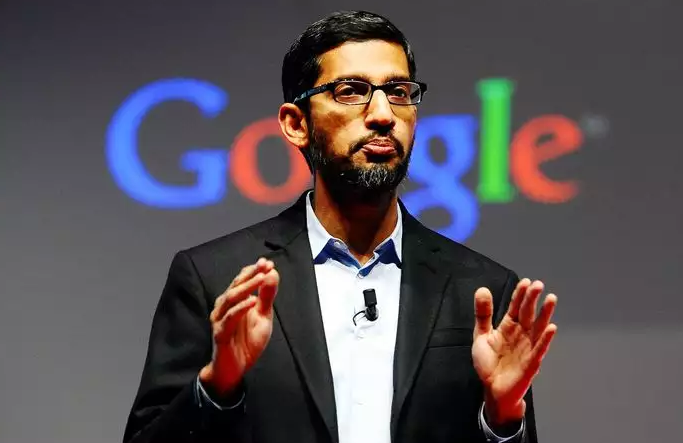
Sundar Pichai, the CEO of Google, once shared that during his college years, he spent countless hours in the library, believing that mastering theoretical concepts would elevate his engineering skills. However, upon entering the workforce, he discovered that the most accomplished engineers weren’t necessarily the ones with the deepest theoretical knowledge. Instead, they possessed an investor's mindset, which empowered them to ask insightful questions, set priorities effectively, and distinguish themselves in their roles. This mindset includes:
- Concentrating on work that yields immediate results
- Evaluating whether the effort is justified before getting started
- Assessing the opportunity costs associated with their projects
In this discussion, I will outline three frequent challenges engineers encounter in their careers and how adopting an investor's perspective can facilitate more effective technical choices.
Section 1.1: Timing Your Work’s Payoff
In the world of investing, the "time value of money" principle underscores that receiving money today is preferable to getting it later. Similarly, in engineering, projects that provide timely returns are more valuable than those that take longer to yield results.
A recent example is Facebook's stock, which saw a drastic drop of 50% after executives indicated that their investments in the Metaverse might not yield returns for as long as 15 years.
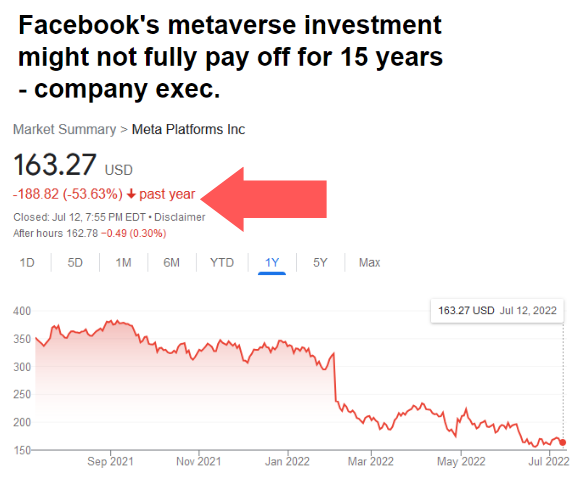
Meta has already allocated over $10 billion to this venture. Just as investors were alarmed by the prolonged payoff period associated with the Metaverse, engineers should steer clear of projects with delayed benefits, particularly in the context of migrations.
Section 1.2: The True Cost of Migrations
From an investment lens, engineering migrations come with guaranteed upfront costs and uncertain future benefits, often taking longer to realize than anticipated. For example, consider a migration timeline spanning two years:
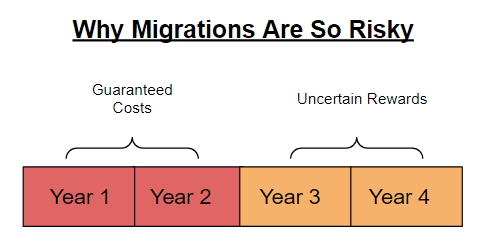
The costs incurred during migration are definite, while the expected benefits are not. This leads to the following considerations:
- The two years spent on migration have a higher present value than the subsequent two years of benefits.
- The rewards from the migration must surpass the initial costs. Spending two years to save two years makes little sense.
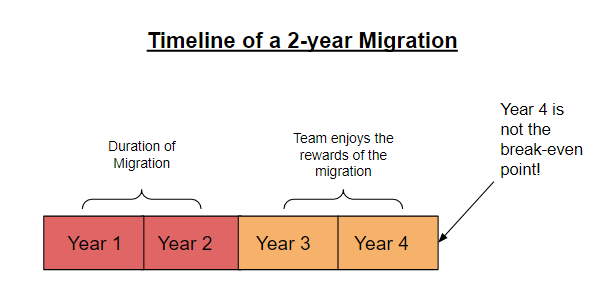
I adhere to a guideline that any engineering effort should yield at least double the expected rewards to justify the investment. If I spend a month on a migration, it must save me two months of time to break even.
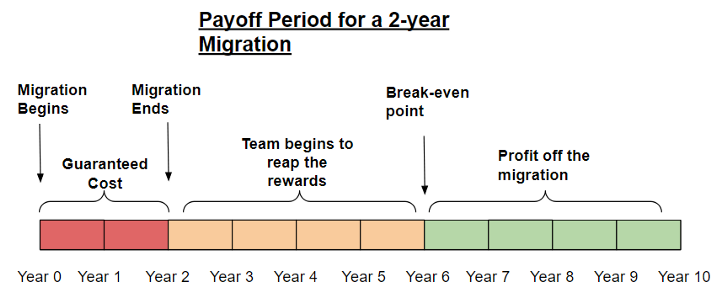
The longer the migration takes, the greater the risk that it may never deliver the anticipated results. Additional risks include shifting business priorities, exit risks from acquisitions, and execution errors that could jeopardize the entire migration.
Chapter 2: Evaluating Project Worth
Warren Buffett famously noted that a company's returns depend more on the right business choice than on the execution of that choice. This applies equally to engineering projects, where selecting the right initiative is more crucial than the intricacies of the code produced.
This is particularly evident in buy versus build decisions. Although I often find myself tempted by new projects, it’s vital to carefully assess whether to buy a solution or to develop one in-house.
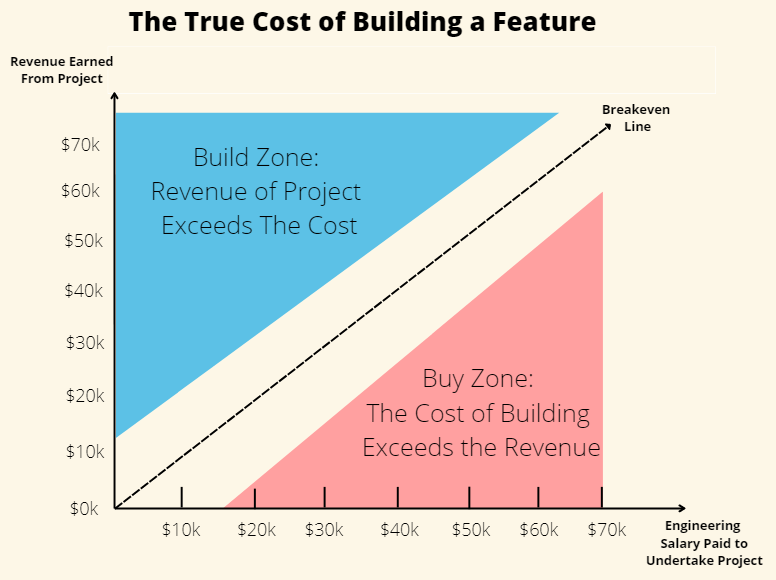
To make informed decisions, I consider several factors:
- Ease of integration and maintenance for purchased solutions
- Relevance of the feature to the company’s core competencies
- Cost implications of building the solution
For instance, I was once faced with the decision to purchase a screen-recording platform, RecordJoy.com, for $12,000 or to build it from scratch.

After estimating that building it ourselves would take two months, costing approximately $32,000 at our hourly rate, it became clear that buying was the more economical choice.
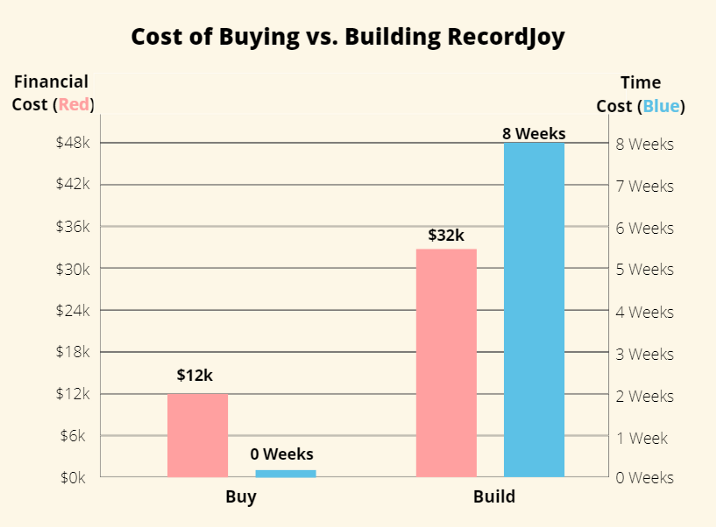
This decision proved pivotal, allowing us to concentrate on enhancing features rather than developing the product from the ground up. Consequently, we successfully scaled RecordJoy to $700 in recurring revenue within months and sold it in April 2022.

Section 2.1: Maximizing Impact
Opportunity cost is a critical concept in engineering. Each decision made comes with the potential loss of another opportunity. For example, cleaning one area of your home means neglecting another.

This principle applies equally to managing technical debt. Prioritizing cleanups that yield the most significant benefits can drive efficiency. For instance, enhancing the alert system for billing services is more impactful than optimizing one for an internal tool.

An illustrative example is Doma, a real-estate software company, which faced a tight deadline to migrate from Heroku to Azure in preparation for their IPO.
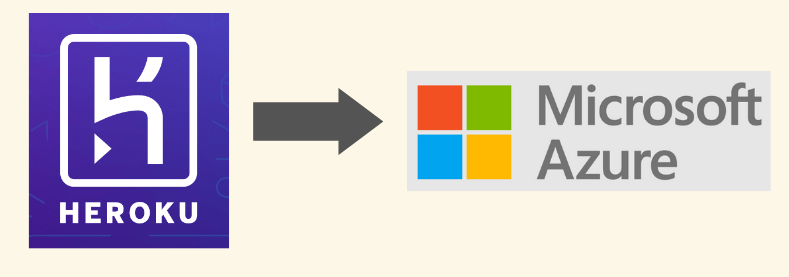
Section 2.2: Crisis Management
Facing a contract issue with Heroku, Doma had to expedite their migration, reducing their timeline significantly. The urgency of this project overshadowed other engineering efforts, highlighting the critical nature of prioritizing based on opportunity costs.
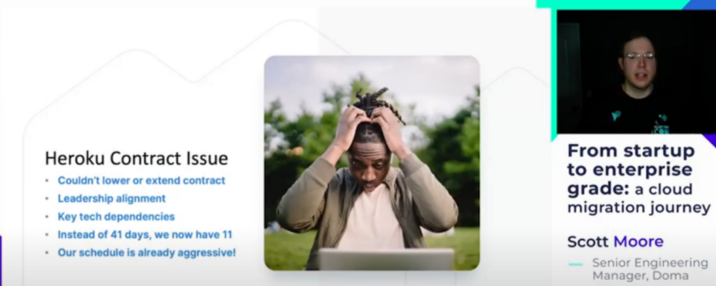
In just eight days, Doma successfully migrated all their applications to Azure, illustrating how a focus on opportunity cost can avert potential crises and lead to successful outcomes.
Final Thoughts
Embracing an investor's mindset in engineering can often outweigh the advantages of merely keeping up with the latest technological trends. By prioritizing financial implications, payoff timelines, and opportunity costs, you will enhance your technical decision-making and optimize your time.
To dive deeper into the engineering mindset, check out "The Engineering Mindset | Will Larson" for insights from industry experts.
For a broader view on investment strategies related to technology, watch "Mayhem: Wall St Balks At Big Tech AI Capex Spend With Bad ROI?" to understand market dynamics.
I’m Michael, a former engineering lead at Netflix, now a full-time consultant, speaker, and writer. If your startup is grappling with engineering, organizational, or growth challenges, feel free to reach out for a free consultation.